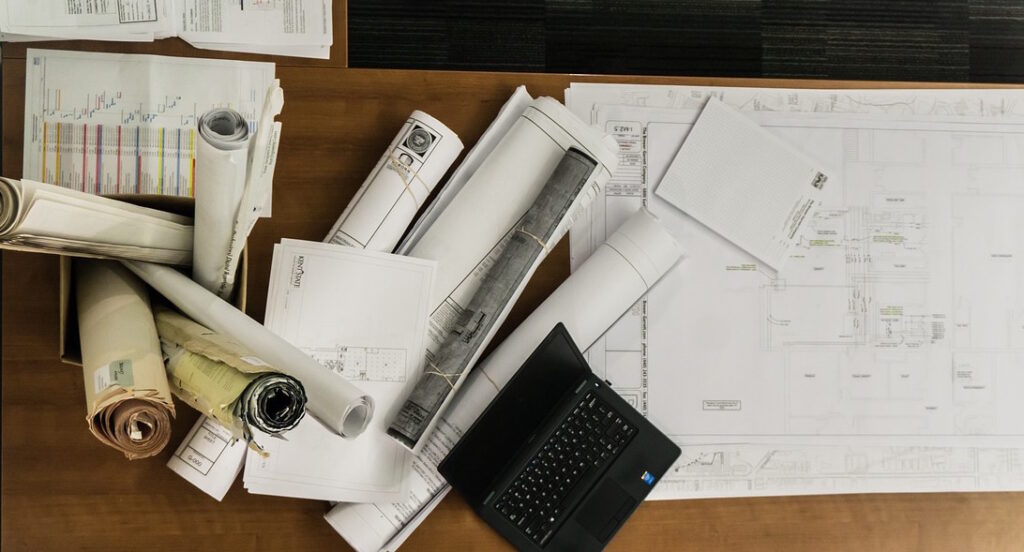
How to Draw a Plot Plan
A plot plan is a crucial document for property development and construction projects. It provides a detailed representation of your property, including existing structures and any proposed changes. Whether you’re planning to build a new home, an addition, or a shed or want to understand your property better, knowing how to draw a plot plan is a valuable skill. In this article, we’ll guide you through the process.

Gathering Tools and Materials
Before drawing your plot plan, you’ll need to gather the necessary tools and materials. Here’s what you’ll need:
- Graph paper or a blank sheet of paper.
- A tape measure or a measuring wheel.
- A pencil and eraser.
- A ruler or straightedge.
You’re ready to begin creating your plot plan with these basic supplies.
Obtaining Property Information
You’ll need information about your property to draw an accurate plot plan. Start by obtaining a copy of your property deed and any available property surveys or Improvement Location Certificates (ILCs). These documents can provide valuable details about property boundaries, dimensions, and easements.
Identifying Property Owner and Location
Begin your plot plan by including your name and address as the property owner. This helps identify the plan’s context. Next, indicate the property’s location, including the street name, so it’s clear which property you’re mapping.
Measuring Property Boundaries
The heart of your plot plan is accurately measuring your property boundaries. Start by measuring your property’s dimensions, marking each side’s lengths accurately. It’s crucial to measure these dimensions from known reference points, such as the edge of the road, right of way, or other fixed landmarks. If your property has corner markers or survey pins, indicate them.
Locating Existing Structures
Once you’ve outlined your property’s boundaries, it’s time to locate and mark all existing structures. This includes buildings, walls, driveways, sidewalks, fences, and any bodies of water such as ponds or streams. Measure and record the distances between these structures and adjacent property lines. This information is essential for zoning and building permit applications.

Including Adjacent Streets
Your plot plan should also show the location and name of adjacent streets or roads. This helps provide context for your property within the neighborhood.
Easements and Legal Information
Mark any easements that cross your property or include any other pertinent legal information. Easements are essential when planning construction or landscaping projects, as they may restrict certain activities on your property.
Proposed Changes
If you plan to make changes or additions to your property, clearly indicate them on the plot plan. This could include proposed structures, driveways, or any other modifications you intend to make.
Scale Drawing
For your plot plan to be accurate, it must be drawn to scale. This means that the distances on your drawing should accurately represent the actual measurements of your property. Standard scales for residential plot plans are 1/8 inch to 1 foot or 1/4 inch to 1 foot. Choose a scale that allows you to include all the necessary details while keeping the project clear and legible.

Labeling and Clarifying
Label all elements clearly to make your plot plan as informative as possible. Use arrows or lines to indicate dimensions and distances. Ensure that the names of streets, structures, and any proposed changes are legible.
Additional Information
While reviewing your application or plot plan, the zoning officer or local permit agency may request more detailed, specific, or additional information. Be prepared to provide any requested information promptly.
Review and Verification
Before finalizing your plot plan, double-check its accuracy. Ensure all measurements are correct and the plan accurately represents your property. Compliance with local regulations and requirements is crucial, as zoning permits issued based on incorrect or incomplete information may be revoked.
Drawing a plot plan can be a manageable task, especially for residential purposes if you have access to property information and are diligent about measurements. However, it’s advisable to consult a professional surveyor or engineer for more complex projects or if property boundaries need to be clarified. Their expertise can help ensure the accuracy of your plot plan, streamlining the permitting process and providing your project adheres to zoning regulations.
In conclusion, knowing how to draw a plot plan is valuable for property owners and developers. By following these steps and guidelines, you can create an accurate and informative plot plan that serves as a crucial tool in the planning and development of your property.

Jason Somers, President & Founder of Crest Real Estate
With over 15 years of professional experience in the Los Angeles luxury real estate market, Jason Somers has the background, judgement and track record to provide an unparalleled level of real estate services. His widespread knowledge helps clients identify and acquire income producing properties and value-ad development opportunities.
Learn more about Jason Somers or contact us.



